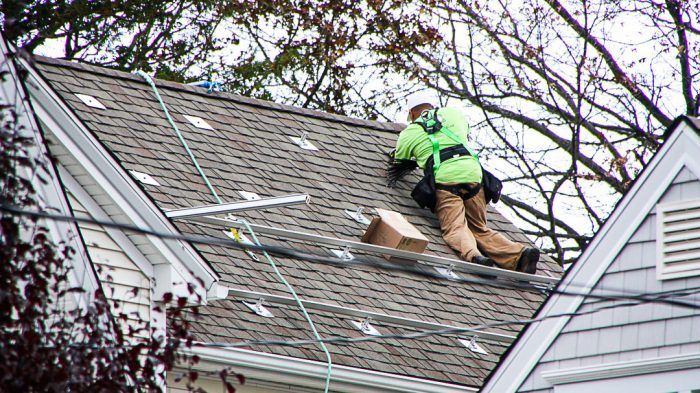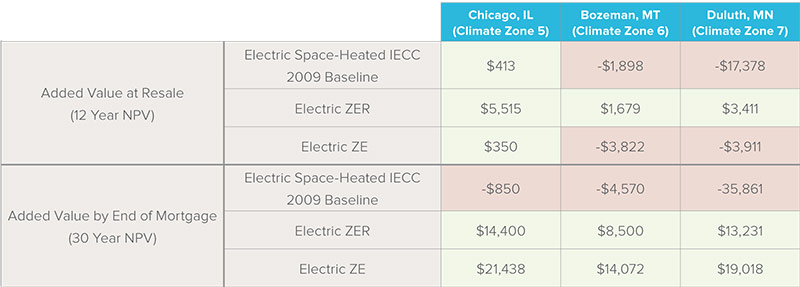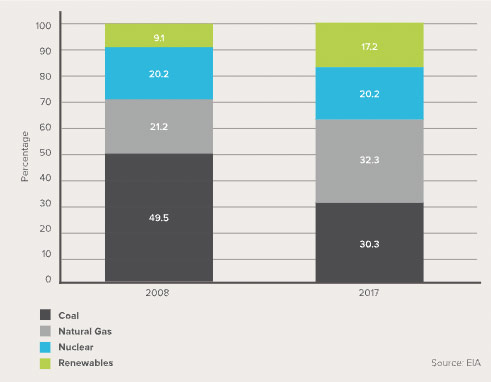All-Electric Buildings Can Work in Cold Climates
Deep efficiency combined with photovoltaic panels can drastically improve the economics of electrification.

By Michael Gartman
A decade ago, the prevailing wisdom held that all-electric buildings presented many challenges: They were served by dirty coal instead of cleaner natural gas, they struggled to meet temperature setpoints in cold climates, and they drastically increased utility bills.
Why, then, this big push toward electrification? Simply put, electrification is an essential strategy for achieving the aggressive climate goals laid out in America’s Pledge and in the climate action plans implemented by leading cities across the country. And electrification is now being fueled more and more by clean renewable energy, which is cheaper (in most cases) than natural gas — and is by far safer and healthier.
However, the myth of all-electric buildings not meeting demand in cold climates continues. Rocky Mountain Institute’s (RMI’s) new Cold Climate Addendum to our Economics of Zero-Energy Homes: Single Family Insights report is the latest in a series of myth-busting reports showing how many of these assumptions are outdated. Our analysis demonstrates how deep efficiency combined with photovoltaic (PV) panels can drastically improve the economics of electrification and make our homes safer and more comfortable.
Why electrify?
Reducing greenhouse gas (GHG) emissions by 80% or more will require essentially eliminating the GHGs produced by buildings — which is only possible at scale with all-electric buildings tied to a clean electricity grid. Electrification is also essential to improve the safety of our housing stock.
Seventy million American homes and businesses burn natural gas, oil, or propane on site to heat their space and water and cook food, generating 560 million tons of carbon dioxide equivalent (CO2e) emissions each year — a tenth of total U.S. CO2 emissions. Having natural gas in homes can also create health and safety concerns. For example, leaks can result in carbon monoxide poisoning, which causes 400 deaths, 20,000 visits to an emergency room, and 4,000 hospitalizations in America annually, according to the Centers for Disease Control and Prevention.
In short, buildings are responsible for upwards of a billion tons of annual CO2e emissions — all because we burn a highly explosive gas in our furnaces, hot water heaters, clothes dryers, stoves, and fireplaces.
The United States is making significant progress in replacing coal with clean energy, with overall coal use declining from over 50% of electricity generation to under 30% in less than a decade. While Figure 1 (below) shows that the grid has gotten cleaner in the last decade by reducing coal and increasing renewable sources of electricity like wind and solar, there is still a long way to go before our grid becomes carbon-free.
RMI’s Economics of Electrifying Buildings report clearly shows that electrifying the building stock today will result in carbon reductions in the majority of the United States and, in the pockets of the country where coal power is still a significant portion of the electricity mix, we expect those coal plants will be shut down in the foreseeable future.
[Image source: U.S. Energy Information Administration]
Is electrification possible in cold climates?
Just as the grid has improved over the past decade, so has building technology. Cold climate heat pumps can effectively heat houses even as outdoor temperatures hit -12°F, with supplemental electric-resistance heat as a backup when really needed. In our analysis, supplemental heat was utilized only 3% of the time in Bozeman, Montana (representing Climate Zone 6), and 10% of the time in Duluth, Minnesota (representing Climate Zone 7).
Heat-pump water heaters (HPWHs) also utilize electric-resistance backup heat for those times when heat-pump technology alone cannot meet water temperature setpoints, whether due to an undersized system or the ambient temperature getting too low. In cold climates, HPWHs should be placed indoors so they are not utilizing electric-resistance heat excessively.
Placing HPWHs indoors eliminates the requirement for electric-resistance backup heat, but does increase the amount of space heating needed. The good news is that in both cold climate locations studied, the heat pumps were able to maintain space and water heating at desired temperatures.
How economical are all-electric zero-energy homes?
Despite electrification being technically feasible, only 8% of all existing homes are served by electric space heating in cold climates, and less than 1% are served by heat pumps. This is likely due to electrification resulting in higher utility bills when it is not implemented as part of a highly-efficient, integrated design strategy.
We modeled an all-electric baseline and a natural gas baseline in Climate Zones 5, 6, and 7, with both baselines meeting IECC 2009 energy code standards. We found that while the up-front costs tend to be lower for an all-electric baseline, the energy bills were significantly higher in colder climates.
Interestingly enough, you can tunnel through this economic barrier by pursuing deeper levels of efficiency and adding PV. In Table 1, we compare an electric code-baseline home, an electric zero-energy (ZE) home, and an electric zero-energy ready (ZER) home to a natural gas baseline home using the net present value of up-front cost and energy bill savings over 12 years (the typical time homeowners plan to stay in their homes) and 30 years (the typical mortgage length). We define a ZE home as a home that produces as much renewable energy as it uses over the course of a year and a ZER home as a home that is as efficient as a ZE home, but without renewables.

We found that, in every instance, pursuing ZER homes was more economical than just electrifying space-heating equipment with code-compliant equipment, and in colder climates it actually changed the economics of electrification from being painful to homeowners to being beneficial.
ZE homes told a more interesting economic story. Over the resale timeframe, they performed economically in a fairly similar way to simply electrifying the heating equipment with code baseline equipment, except in Climate Zone 7, where ZE homes were far more economical. Using the 30-year mortgage timeframe, ZE homes are more economical than both ZER and electric baseline homes. It is worth noting that while this analysis includes the federal solar investment tax credit, it does not include local incentives nor savings from eliminating gas hookups, which would help ZE homes break even with natural gas homes even sooner.
Looking toward the future
Electrification is a requisite strategy for achieving our climate action and public health goals. While deep levels of efficiency can make electrification in newly constructed homes economic today, builders may need a push from policymakers and utilities to feel comfortable changing their designs from business-as-usual natural gas in these cold-climate locations.
Policymakers and utilities should stop incentivizing new gas hookups and appliances. Additionally, utilities should stop socializing the cost of gas infrastructure extensions through their rate bases. Instead, they should begin providing incentives to homeowners and builders to electrify, including offering expedited permitting for electric equipment, more financial incentives, and technical assistance and training for the labor force.
The good news is many cities understand the importance of electrification and are developing policies to promote it, which will result in a decarbonized and safer building stock.
Previously published on GreenBuildingAdvisor.com. Alisa Petersen and Michael Gartman are senior associates on the Rocky Mountain Institute’s Buildings team. ©2019 Rocky Mountain Institute. Published with permission. Originally posted at the RMI Outlet.






